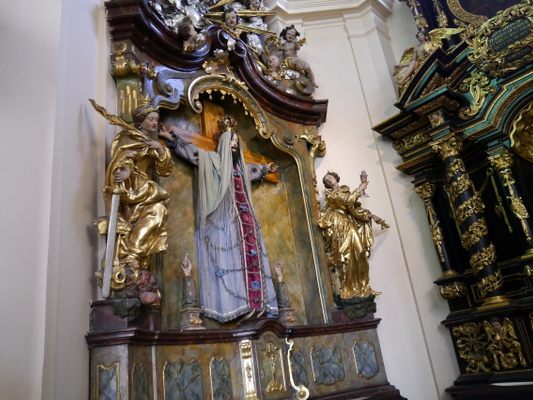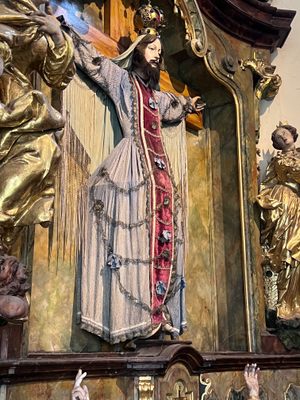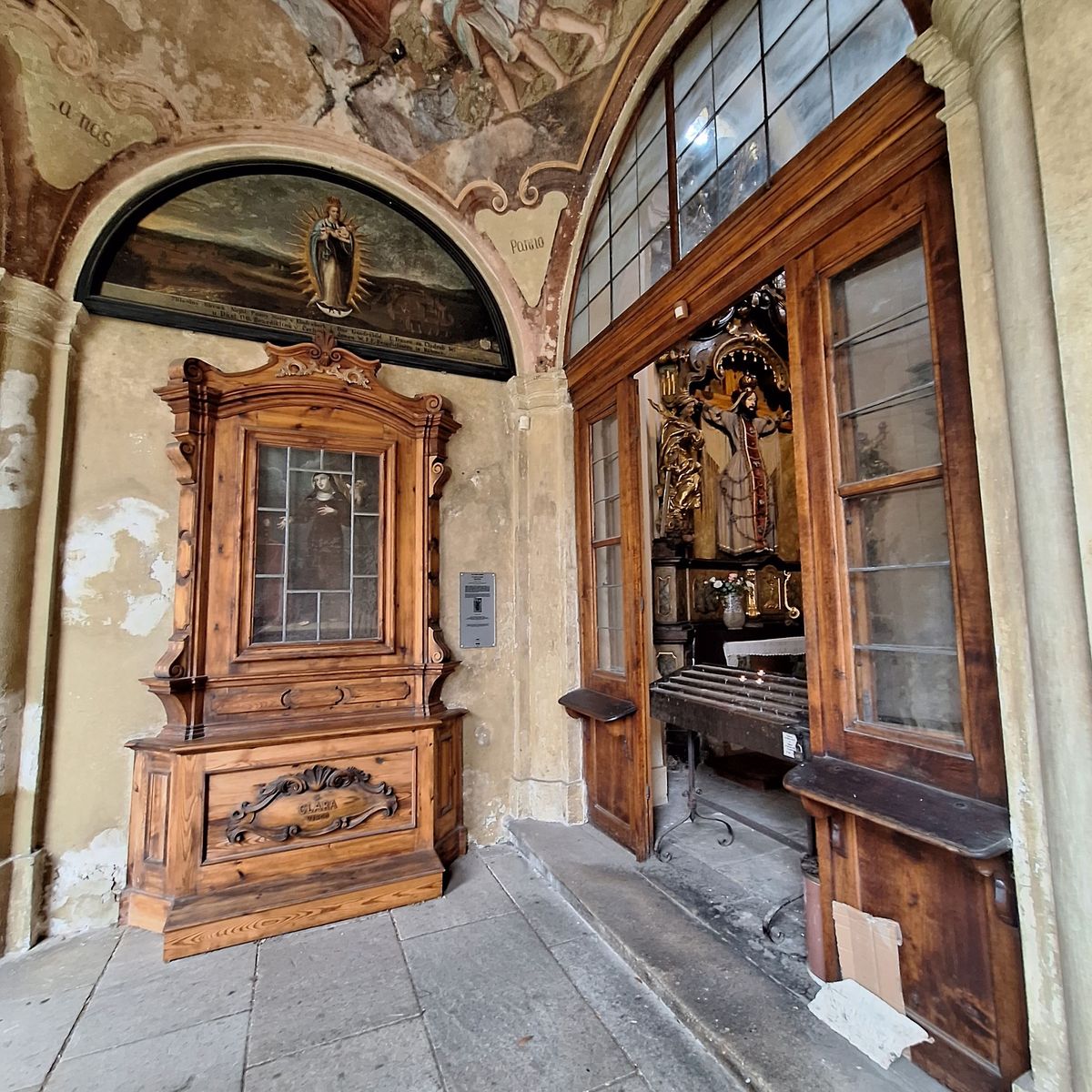About
There are a number of treasuries and chapels within the famous pilgrimage site of Loreto Church in Prague, but there is one chapel in particular, The Chapel of Our Lady of Sorrows, that houses a statue with a strange and fascinating—and completely wrong—tale.
As a young noblewoman, Wilgefortis’ father (in some versions he is the king of Portugal) had promised her to a pagan king. The pious Wilgefortis would have nothing to do with the heathen king, so she took a vow of virginity and prayed for a miracle. It came in a rather roundabout way; the pagan king did not die a sudden death, nor did he fall in love with another girl. Instead, Wilgefortis grew a beard worthy of any 19th-century sideshow. The engagement was immediately off, and her father, so enraged by her unfeminine miracle, had her crucified. With that, she became an inspiration to oppressed and unhappily married women around the globe.
Wilgefortis’ story may seem somewhat strange as far as the stories of the lives of saints go, and that's because it is. Wilgefortis is a fake, a tale that dates back to a wooden carving from the 11th century. Her name is derived from the Old German words Heilige Vartez, or Holy Face. The Volto Santo of Lucca (”Holy Face of Lucca”) is a carving of the crucifix, believed to have been the work of Nicodemus, with one key difference. Instead of the customary loincloth, Jesus is clad in a full-length dress or tunic. He was commonly clothed this way in the early Middle Ages, but the practice had been discontinued in the 11th century in favor of the loincloth.
Thus, when copies of the great Volto Santo of Lucca began to appear, the unfamiliar image of the dress confused Westerners, who quickly came up with the tragic story of Wilgefortis to explain the cross-dressing Jesus. It seems however that Wilgefortis was just the saint many women were waiting for. Wilgefortis became extremely popular in the fifteenth and sixteenth centuries, with different names all over Europe, translating to everything from “Strong Virgin” to “The Liberator.” There are a number of statues of the bearded and crucified Wilgefortis around Europe today, including the statue in the small Chapel of Our Lady of Sorrows at the Loreta in Prague. She's easy to miss—just look for a statue that looks exactly like Jesus in a robe.
Related Tags
Know Before You Go
Open daily 10 AM - 5 PM. There's a cz210 entrance fee to the church. Included with admission is access to the newly renovated upstairs galleries that showcase a vast array of religious items. There are also several 17th-century 'Memento Mori' wall paintings that were discovered in 2011.
The shrine is located in the last corner, on the southwestern section of the quadrangle.
Community Contributors
Added By
Edited By
Published
January 25, 2010















































